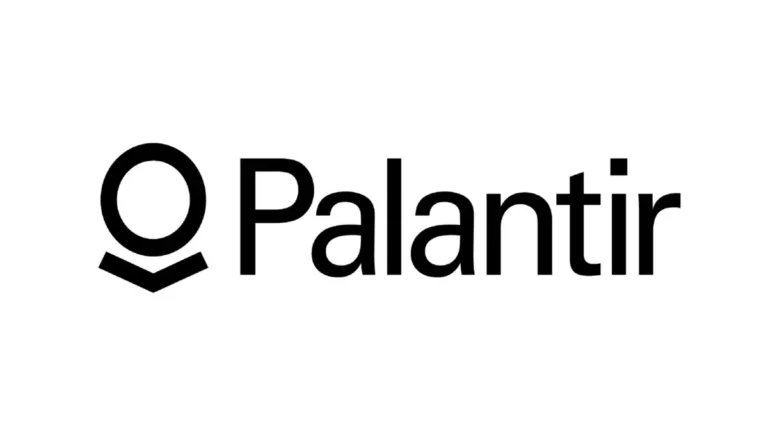Fintech And AI in Personal Finance
The New Era of Money Management — Fintech and AI in Personal Finance In today’s hyper-connected digital economy, how we manage money…
The New Era of Money Management — Fintech and AI in Personal Finance
In today’s hyper-connected digital economy, how we manage money has evolved more in the past five years than it did in the previous fifty. At the heart of this transformation are two disruptive forces: Fintech and AI in personal finance. These technologies are no longer just tools for the tech-savvy — they are becoming essential companions for anyone seeking to make smarter financial decisions, automate savings, reduce debt, or build long-term wealth.
From budgeting apps that categorize your spending in real time, to robo-advisors that invest your money with algorithmic precision, AI in personal finance has created a wave of innovation that prioritizes personalization, automation, and predictive power. Meanwhile, Fintech, the broader ecosystem that merges finance with technology, is redefining everything from mobile banking and digital wallets to peer-to-peer lending and cryptocurrency platforms.
The rise of this new ecosystem is not just about convenience. It’s about empowerment. Consumers now have access to financial tools once reserved for the elite — and they can use them 24/7, from the palm of their hand. Whether you’re planning for retirement, trying to eliminate credit card debt, or just looking to get better at budgeting.
In this article, we’ll explore how these technologies work, where they’re headed, and what they mean for your financial future. Welcome to a smarter, more data-driven era of personal finance — where your next best money move might just come from an algorithm.

1. Understanding Fintech and AI in Personal Finance: What’s the Difference and How Do They Work Together?
To appreciate the revolution happening in your wallet, it’s crucial to first understand what Fintech and AI in personal finance actually mean—and how they work together to reshape money management.
Fintech, short for financial technology, is the umbrella term for any digital innovation that disrupts traditional financial services. This includes mobile banking apps, digital investment platforms, peer-to-peer lending networks, buy-now-pay-later services, and crypto wallets. The core goal of Fintech is to make financial services more accessible, user-friendly, and efficient.
On the other hand, AI in personal finance specifically refers to the use of artificial intelligence to enhance how individuals manage their finances. This includes machine learning algorithms that analyze spending behavior, natural language processing (NLP) chatbots for financial advice, and predictive analytics that help users forecast future expenses or savings opportunities. In simple terms, AI adds the “smart” layer to Fintech solutions.
When combined, Fintech and AI in personal finance provide powerful tools that help users automate routine tasks (like saving or budgeting), receive tailored financial advice, and even detect fraud in real-time. AI learns from your habits, improving its suggestions over time—similar to how Netflix learns your movie preferences.
For example, apps like Cleo or PocketGuard use AI to send you playful messages about overspending, suggest where to cut back, and track your progress over time. These solutions wouldn’t be possible without the blend of Fintech infrastructure and AI intelligence.
According to McKinsey, financial institutions integrating AI with Fintech have seen operational cost reductions by 20–30% and customer satisfaction improvements across the board. That’s because these tools aren’t just efficient—they’re user-centric, designed to help people who may not be financial experts take control of their money.
As we move forward in the digital economy, understanding the synergy between AI in personal finance and Fintech will be essential for anyone who wants to stay financially competitive and tech-savvy.
2. The Rise of AI in Personal Finance: From Budgeting Bots to Smart Investing
Artificial intelligence isn’t just powering your smartphone’s voice assistant—it’s becoming your financial co-pilot. The rise of AI in personal finance has shifted the landscape from passive number-crunching to proactive financial decision-making. Instead of just tracking where your money went, AI now helps you predict where it’s going, and how to make it work harder for you.
One of the most widespread applications of AI in personal finance is automated budgeting. Tools like YNAB (You Need A Budget), Mint, and Cleo use algorithms to analyze your income and spending patterns. Based on that, they generate smart budgets and categorize expenses in real-time. These platforms do more than organize—they offer suggestions for cutting costs, highlight recurring subscriptions, and even warn you when you’re approaching spending limits.
But AI doesn’t stop at saving you from overspending. It also helps you invest smarter. Robo-advisors like Betterment and Wealthfront use AI to create customized investment portfolios based on your financial goals, risk tolerance, and timelines. These platforms monitor markets in real-time and rebalance portfolios automatically, offering a hands-off investing approach with lower fees compared to traditional advisors. These advanced analytics and decision-making tools are made possible by companies leading the charge in AI innovation—like Palantir Technologies, which is revolutionizing how data powers decision-making in finance, healthcare, and government systems. What once required a financial planner now happens through a user-friendly app.

AI-driven chatbots like Erica (from Bank of America) or Eno (from Capital One) assist with everything from tracking transactions to answering questions about credit scores. These bots learn from your history and behavior, evolving their advice to be increasingly tailored to your needs.
Moreover, AI in personal finance is beginning to utilize natural language processing (NLP) to understand voice commands or text-based queries. You can now ask your banking app questions like, “How much did I spend on food last month?” and receive instant, accurate answers.
And then there’s fraud prevention—an area where AI has shown enormous impact. Banks now deploy machine learning models to flag suspicious activity in real-time, reducing unauthorized charges and improving user trust. According to Forbes, AI algorithms in financial institutions have helped reduce fraud-related losses by over 50% in the past few years.
The power of AI in personal finance lies in its ability to anticipate, adapt, and act. As these tools become more advanced and accessible, everyday users are gaining unprecedented control over their money—not just how it’s spent, but how it grows.
3. Fintech’s Impact on Traditional Banking and the Shift to Digital-First Money Management
The rise of Fintech and AI in personal finance is not just about adding new features to old systems—it’s about disrupting them entirely. Traditional banks, once the undisputed gatekeepers of financial services, are now being outpaced by agile, user-first Fintech startups that leverage technology and data to deliver faster, cheaper, and more personalized solutions.
Historically, consumers relied on brick-and-mortar banks for everything from savings accounts to loan applications. But the digital-native generation—millennials and Gen Z—expect convenience, speed, and mobile accessibility. Fintech companies like Chime, Revolut, and N26 have answered that call, offering full-service digital banking without the physical branch. These platforms provide fee-free accounts, instant money transfers, early direct deposits, and seamless app experiences that leave traditional banks scrambling to catch up.
AI enables real-time decision-making for credit approvals, personalized savings suggestions, and fraud detection—at scale and with minimal human intervention. For example, AI can assess a borrower’s creditworthiness not just from their credit score, but from alternative data like transaction history, employment trends, and even smartphone usage. This gives more people access to financial tools, especially those underserved by legacy banks.
Meanwhile, the integration of AI in personal finance has made Fintech platforms smarter every year. Digital banks now offer AI-driven budgeting tools, real-time transaction alerts, and predictive balance forecasts. Some even provide emotional analytics—tools that help users understand their spending behaviors based on mood or environment.
The result? A reimagined banking experience that’s fast, transparent, and often more secure. According to PwC’s Global FinTech Report, over 80% of traditional financial institutions fear they are at risk of losing business to Fintech innovators. Many are responding by partnering with Fintechs or building their own digital-first platforms—but even then, the agility and innovation speed of newer players remain unmatched.
For consumers, this competition is a win. It means more choices, better features, and less reliance on outdated systems. For example, instead of waiting in line to deposit a check, users can now use mobile capture. Instead of meeting with an advisor, they can use a robo-advisor app tailored to their profile. This is the new normal—where Fintech and AI in personal finance combine to offer smarter, faster, more inclusive financial tools for all.
As the lines between banks and apps continue to blur, one thing is clear: the institutions that fail to adapt to this tech-driven transformation will be left behind—along with the customers they once served.
4. Personal Finance for Everyone: How AI and Fintech Promote Financial Inclusion
One of the most powerful outcomes of AI in personal finance and Fintech is their ability to bridge the gap between financial services and underserved communities. While traditional banks often cater to a specific demographic—those with stable income, high credit scores, and access to physical branches—Fintech and AI have radically democratized who can participate in the global financial system.
In many parts of the world, millions of people remain unbanked or underbanked due to factors like poor credit history, geographic isolation, or lack of identification. Fintech apps are breaking down these barriers by offering easy-to-open digital accounts that require only a smartphone and internet connection. Platforms like M-Pesa in Kenya or Paytm in India are revolutionizing access to digital wallets, bill payments, and peer-to-peer transfers for people who were previously excluded from the banking system.
Even in developed countries, AI is making a difference. AI-based credit scoring models evaluate alternative data points—such as rent payments, mobile usage, or gig economy income—helping people with thin credit files qualify for loans, housing, and credit cards. This means a student, freelancer, or immigrant without a formal credit history can now access services that used to be out of reach.
As AI becomes increasingly embedded in finance, it mirrors larger trends happening across e-commerce and the broader digital economy. Platforms are evolving from basic automation to intelligent systems that adapt in real-time—reshaping how businesses engage with customers and scale operations. You can read more about this transformation in our full guide on The Future of eCommerce, where AI is disrupting everything from product recommendations to fulfillment logistics.
Fintech also plays a vital role in financial literacy. Apps like Albert, Ellevest, and Acorns don’t just manage money—they educate users through AI-powered coaching, tips, and interactive savings goals. Many of these platforms are gamified to make learning about personal finance more engaging and less intimidating.
Another area of impact is in cost savings. Traditional financial services often come with fees—maintenance fees, overdraft fees, and wire fees. Fintech companies typically eliminate or drastically reduce these costs, thanks to lower overhead and digital automation. AI helps maintain efficiency by automating customer support, budgeting advice, and fraud prevention—keeping operations lean and user costs low.
For example, AI chatbots like Plum or Olivia don’t just track spending—they help users identify bad habits and suggest savings opportunities in real time. Some even use behavioral science to “nudge” users toward better financial decisions. This form of real-time support is especially valuable to those who lack access to traditional financial advisors or education.
A report by the World Bank indicates that digital financial services could reduce global poverty and boost GDP in emerging markets. As more Fintech platforms integrate AI in personal finance, the potential for scalable, inclusive financial access continues to grow.
The synergy between Fintech and AI in personal finance isn’t just about convenience or profits—it’s about creating a fairer, more accessible financial future. Whether you’re living in a rural village or a bustling city, if you have a smartphone, you can have a financial strategy.
5. The Role of AI in Personal Finance Security and Fraud Prevention
As digital financial tools become more integrated into our daily lives, concerns about security have grown—and rightly so. With more transactions, banking details, and sensitive financial data moving online, the risks of fraud and cybercrime increase. Thankfully, this is where AI in personal finance shines. Combined with the agility of Fintech, AI is revolutionizing how we detect threats, protect consumer data, and prevent fraud in real time.
Traditional fraud detection systems were rule-based. They relied on predefined triggers—like a large transaction in a foreign country—to flag suspicious behavior. These systems worked, but they were slow, reactive, and prone to false positives. Now, AI in personal finance uses machine learning and anomaly detection algorithms that analyze millions of transactions in real time to spot irregular patterns.

For example, if you usually shop in your local city and suddenly your card is used to purchase electronics halfway around the world, AI can instantly freeze the transaction, notify you, and prevent the breach from escalating. Unlike traditional systems, AI gets smarter with every interaction, learning your unique habits and identifying subtle anomalies that even human analysts might miss.
Fintech platforms like PayPal, Venmo, and Square heavily rely on AI-powered fraud prevention systems. These technologies evaluate dozens of data points—location, device type, transaction frequency, user behavior, and even keystroke dynamics—to make split-second security decisions. According to IBM Security, organizations using AI in fraud detection reduce detection time by up to 60% and save millions in potential losses annually.
Another major breakthrough is biometric security, which is increasingly used in Fintech apps. Facial recognition, fingerprint scanning, and voice authentication—often driven by AI—are making it harder for cybercriminals to impersonate users or access sensitive data. These layers of verification add both convenience and protection, eliminating the need for easily hacked passwords.
AI is also changing how phishing attacks and identity theft are handled. AI models now scan emails, messages, and websites to flag scams before a user even interacts with them. Fintech services use AI to verify user identities through document scans and live selfies, comparing them in real time to prevent impersonation and fake account creation.
Of course, all this comes with a commitment to data privacy and compliance. As AI in personal finance continues to evolve, it must align with regulations like GDPR, CCPA, and other local data protection laws. Responsible AI design ensures that while systems learn from user data, they do so ethically and with transparency.
In a world where financial fraud is increasingly sophisticated, AI isn’t just helpful—it’s essential. Together with Fintech, it forms a security framework that’s dynamic, predictive, and constantly evolving. For the modern user, that means peace of mind: your finances are not only smarter but safer too.
6. The Future of AI in Personal Finance and Fintech: What’s Next?
As we step deeper into a digitized financial world, the trajectory of AI in personal finance and Fintech is not just promising—it’s transformative. What began with budgeting apps and robo-advisors is now evolving into an ecosystem where real-time financial guidance, predictive insights, and hyper-personalization are becoming the new normal.
One of the most exciting developments is the move toward hyper-personalized finance. Instead of one-size-fits-all advice, AI is being trained on massive datasets to provide individual users with financial strategies tailored to their goals, spending habits, life events, and even emotional triggers. In the future, AI in personal finance will likely act more like a personal CFO—helping you make informed decisions about saving, investing, borrowing, and spending in real time.
Meanwhile, Fintech companies are integrating generative AI and natural language processing (NLP) to enhance user interaction. This means financial advice will soon come in plain language, perhaps even through real-time conversations with voice-enabled assistants. Instead of digging through dashboards or charts, users will simply ask, “Can I afford a vacation this summer?” and receive an actionable response based on real-time financial data.
There’s also a surge in embedded finance, where non-financial platforms (e.g., ride-share apps, e-commerce sites) integrate banking features directly into their ecosystems. With the help of Fintech, companies like Uber and Shopify are offering users the ability to bank, borrow, or invest without ever leaving the app.
This shift isn’t just reshaping personal money habits—it’s also redefining how people work. From freelance finance consultants to remote tech teams building fintech tools, location-independent work is becoming the new normal. Explore deeper insights in our article on The Future of Remote Work to see how AI is powering flexibility, productivity, and global collaboration.
Another major trend is AI-powered financial wellness scoring. Instead of just checking your credit score, you’ll be able to track your “financial health score”—a holistic index that considers savings behavior, debt levels, financial resilience, and more. This will empower users to improve their habits proactively, with the support of smart tools that guide them step by step.
Additionally, sustainability and ethical investing are gaining traction. AI is being used to analyze ESG (Environmental, Social, Governance) data, helping users align their portfolios with their values. In the Fintech space, startups are emerging to serve this demand, using machine learning to scan the global market for ethical investment opportunities.
However, the future is not without challenges. There will be increasing scrutiny over how AI in personal finance uses personal data, how transparent its decisions are, and whether bias in algorithms may exclude certain users. Regulators will need to strike a balance between innovation and protection, especially as Fintech continues to disrupt global financial infrastructure.
Whether you’re a student managing student loans, a freelancer juggling multiple income streams, or a retiree looking to stretch your savings, these technologies will not only guide your decisions—they’ll redefine your financial experience altogether.
Embracing the Smart Money Revolution
The financial landscape of 2025 is no longer defined by paper statements, in-person meetings, or long wait times at the bank. Instead, it is being shaped by the seamless integration of AI in personal finance and the rapid evolution of Fintech—a combination that is empowering individuals to take control of their financial lives in ways previously unimaginable.
We’ve entered an age where budgeting, saving, investing, and even retirement planning can all happen in real time, often through a single app on your phone. AI learns your habits, understands your goals, and proactively offers solutions. Fintech provides the agile infrastructure that delivers these services at lightning speed, without the overhead and bureaucracy of traditional institutions.

The benefits are tangible: faster decision-making, lower costs, better access, and stronger security. Whether you’re using an AI-powered chatbot to monitor your expenses, a robo-advisor to diversify your portfolio, or a digital wallet to send money overseas, the experience is not only more convenient—it’s smarter.
But this shift isn’t just about convenience. It’s about inclusivity and empowerment. They’re educating users, preventing fraud, and making financial planning less intimidating and more human.
Of course, challenges remain. Data privacy, algorithmic bias, and digital literacy must be addressed as these technologies grow. But the trajectory is clear: the future of finance is automated, personalized, and AI-enhanced.
For those willing to embrace this transformation, the payoff is substantial. With the right tools, your finances can evolve from a source of stress to a source of strength. The smart money revolution isn’t coming—it’s already here. And those who adapt will not only survive the change—they’ll thrive in it.
Want more real-time insights?
Bookmark TrendSpotterNews and explore our Future of E-Commerce and Remote Work Trends guides to stay ahead in the fast-moving digital economy.





